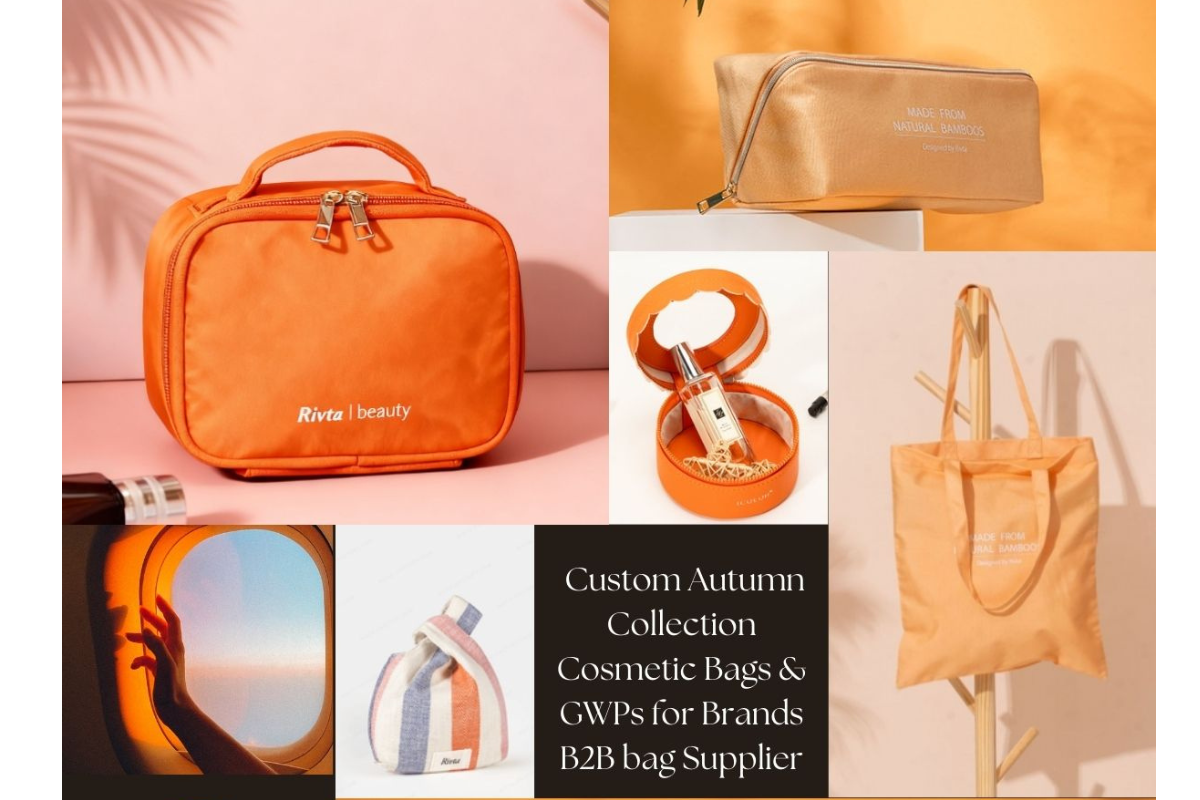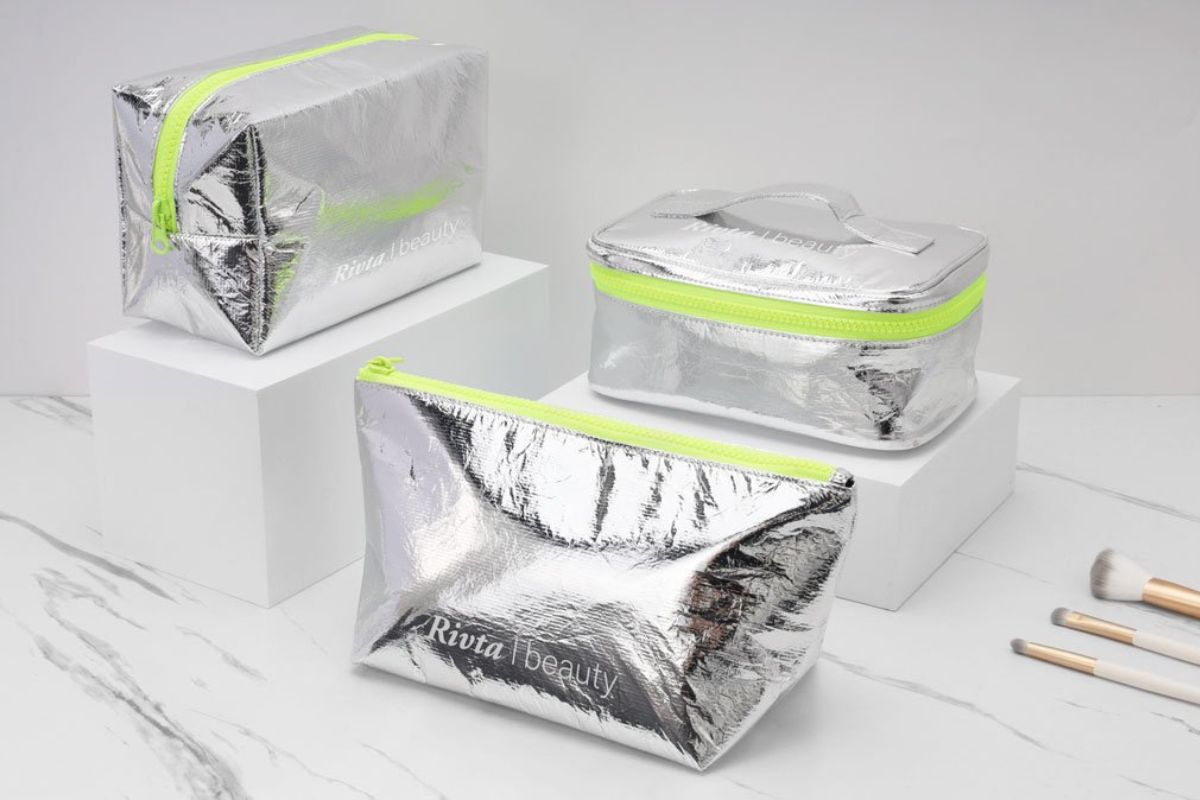Beyond the Basic Pouch: 3 Next-Gen Cosmetic Bag Designs Set to Dominate the US, UK, and German Markets in 2025
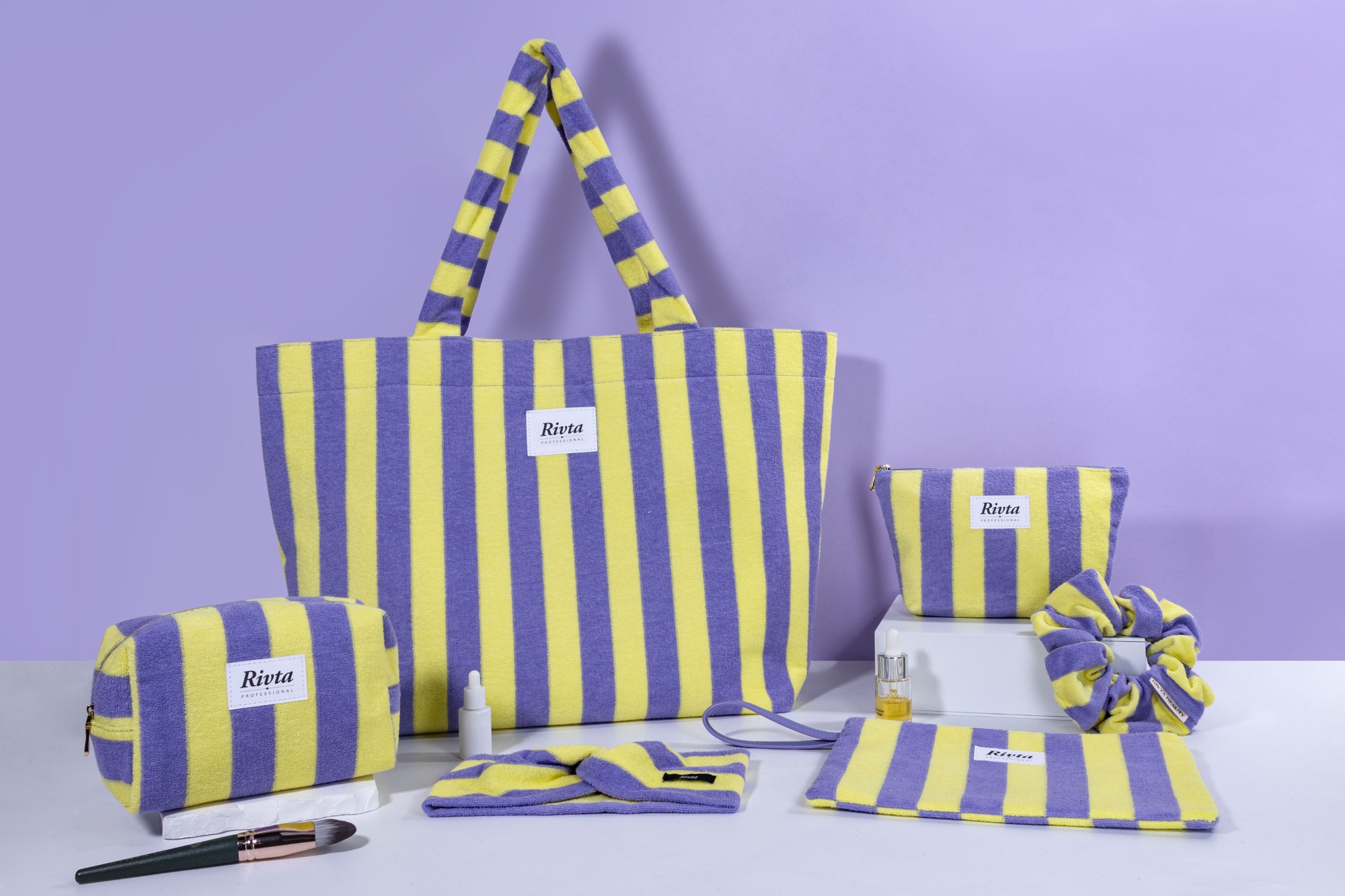
In the dynamic world of beauty and personal care, the humble cosmetic bag has quietly undergone a profound transformation. No longer merely a functional container for makeup and toiletries, it has evolved into a statement piece, a reflection of personal values, and a crucial extension of a brand's identity. As we approach 2025, the global beauty market, particularly in the discerning regions of the United States, the United Kingdom, and Germany, is witnessing an accelerating demand for solutions that marry practicality with purpose. Brands are increasingly seeking partners who can deliver not just products, but innovative, sustainable, and highly customizable accessories that resonate deeply with today's environmentally conscious and aesthetically aware consumers.
This shift is driven by a confluence of factors: evolving consumer preferences towards eco-friendly choices, stringent regulatory landscapes pushing for greater sustainability, and a pervasive desire for products that offer both enhanced functionality and a touch of individuality. For businesses operating in the beauty and accessories sectors, understanding these emerging currents is not just advantageous—it's imperative for sustained growth and market relevance. The cosmetic bag, once an afterthought, is now a strategic asset, capable of reinforcing brand narratives and fostering deeper connections with end-users.
In this comprehensive exploration, we will delve into three pivotal trends poised to redefine the cosmetic bag landscape in 2025 and beyond. We will examine how these trends are reshaping industry expectations, from the revolutionary materials being adopted to the intelligent features being integrated, and the profound impact of personalization on brand storytelling. Furthermore, we will highlight how manufacturers like Rivta, with decades of experience and a steadfast commitment to innovation and sustainability, are uniquely positioned to help brands navigate this exciting new era and unlock unparalleled competitive advantages in these key global markets.
1. Sustainability and the Material Revolution: Redefining Cosmetic Bag Production
The discourse around sustainability has transcended mere corporate social responsibility; it has become a fundamental pillar of consumer expectation and regulatory mandate, particularly within the beauty and personal care sectors. For cosmetic bags, this translates into a profound material revolution, where the choice of fabric, hardware, and even manufacturing processes is scrutinized for its environmental footprint. Brands are no longer simply asking for a bag; they are demanding a commitment to ecological stewardship embedded in every stitch and seam.
At the heart of this transformation are increasingly stringent regulatory frameworks, notably in the European Union. The proposed Packaging and Packaging Waste Regulation (PPWR) is a prime example, signaling a clear legislative push towards a circular economy. This regulation, among others, aims to significantly reduce packaging waste, promote recyclability, and mandate the use of recycled content. By 2030, the EU targets that at least 50% of all packaging waste should be recycled, with a specific focus on incorporating 30% recycled material into plastic packaging. Such directives are not just guidelines; they are legally binding requirements that will reshape supply chains and compel brands to adopt more sustainable practices or face non-compliance penalties.
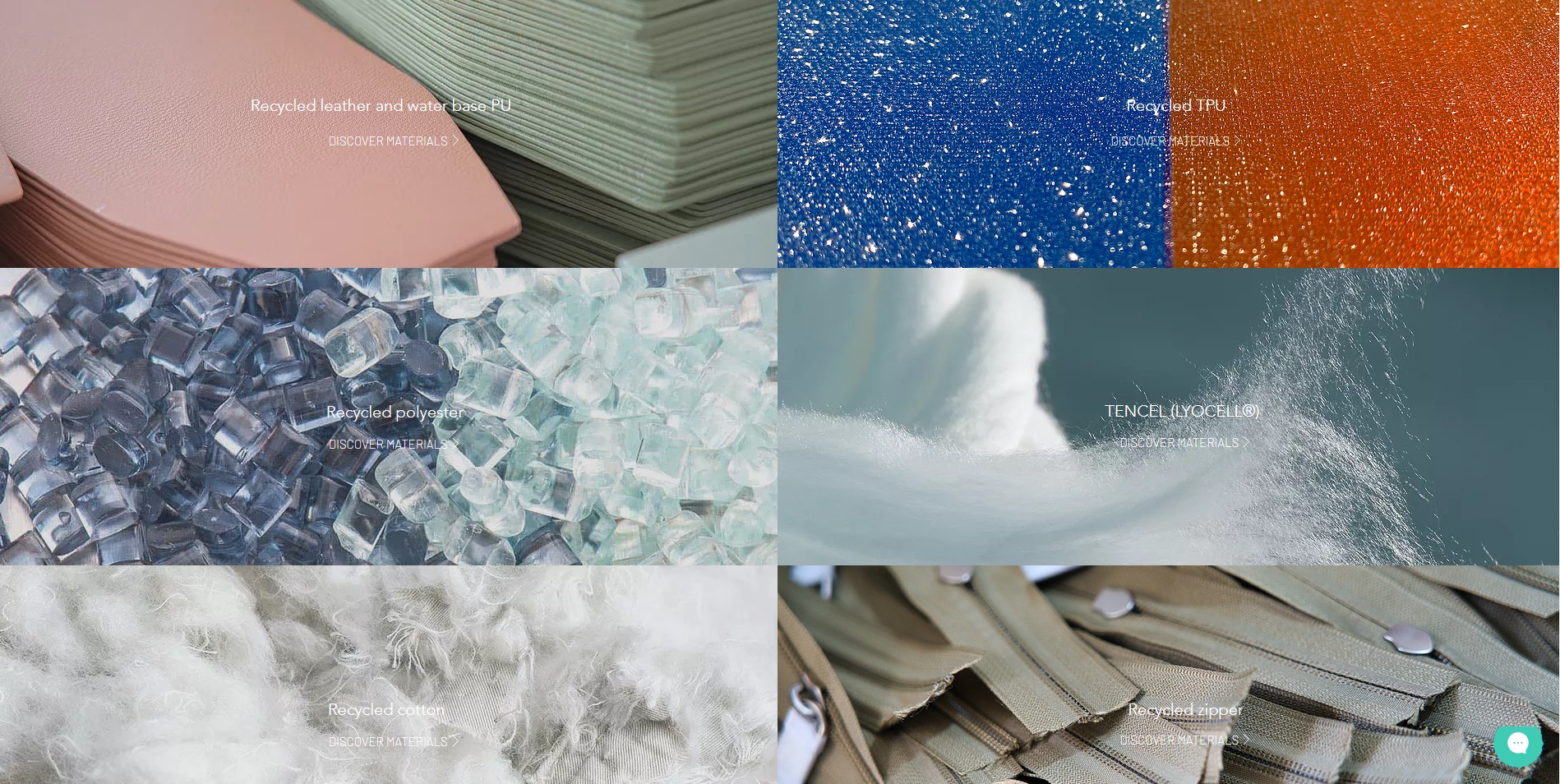
The material landscape for cosmetic bags is therefore rapidly diversifying beyond conventional plastics and virgin fabrics. The emphasis is now on alternatives that offer comparable performance with a significantly reduced environmental impact. Here are some of the leading contenders:
- Recycled Materials: Post-consumer recycled (PCR) plastics, particularly recycled polyethylene terephthalate (rPET) derived from plastic bottles, are gaining immense traction. These materials offer a closed-loop solution, diverting waste from landfills and oceans while maintaining the durability and aesthetic appeal required for cosmetic bags. Similarly, recycled nylon, often sourced from discarded fishing nets and industrial waste, provides a robust and versatile option. The key here is that advancements in recycling technologies have ensured that these recycled materials can meet the same rigorous quality and performance standards as their virgin counterparts, making them a viable and responsible choice for high-end products.
- Bio-based Materials: Moving beyond recycling, the industry is exploring materials derived from renewable biological resources. Polylactic Acid (PLA), for instance, is a biodegradable and compostable polymer typically made from fermented plant starch (like corn or sugarcane). While its application in cosmetic bags is still evolving, its potential for reducing reliance on fossil fuels and offering an end-of-life solution through composting is significant. More groundbreaking are materials derived from agricultural residues, such as wheat straw, rice husks, and hemp stalks. These “waste-to-packaging” solutions offer a dual benefit: reducing agricultural waste and providing a sustainable fiber source that does not compete with food crops or contribute to deforestation. Life Cycle Analyses have shown that these next-generation fibers can have significantly lower land use, reduced impact on biodiversity, and fewer carbon emissions compared to traditional forest-based fibers.
- Innovative Alternatives: The pursuit of sustainability has also led to the rise of various other innovative materials. Vegan leather, often made from plant-based sources like pineapple leaves, apple peels, or mushroom mycelium, offers an ethical and environmentally friendlier alternative to traditional animal leather, without compromising on luxury or durability. Biodegradable TPU (thermoplastic polyurethane) is another material gaining traction for its flexibility, durability, and ability to decompose under specific conditions. Even silicone, often overlooked, is being re-evaluated for its reusability and longevity, contributing to waste reduction by offering a durable, long-lasting product. The trend towards transparent and minimalist designs has also seen a resurgence in PVC, but with increasing pressure for recycled or bio-based versions to meet regulatory demands.
By embracing these material innovations, brands can not only comply with evolving regulations but also appeal to a growing segment of consumers who prioritize environmental responsibility. The cosmetic bag, when crafted from these next-generation materials, becomes a tangible representation of a brand’s commitment to a more sustainable future, enhancing its reputation and fostering deeper consumer loyalty.
Here’s a comparative overview of some mainstream eco-friendly cosmetic bag materials for 2025:
| Material Type | Key Advantages | Application Scenarios | Environmental Certifications/Considerations |
|---|---|---|---|
| Recycled Polyester (rPET) | Durable, water-resistant, reduces plastic waste, versatile in texture and finish | Everyday cosmetic bags, travel pouches, promotional items | GRS (Global Recycled Standard), Oeko-Tex Standard 100. Requires energy for recycling. |
| Organic Cotton | Biodegradable, renewable, soft touch, chemical-free cultivation | Natural/minimalist aesthetic bags, luxury packaging, reusable shopping totes | GOTS (Global Organic Textile Standard), OCS (Organic Content Standard). Water usage in cultivation. |
| Vegan Leather (Plant-based) | Cruelty-free, often biodegradable, luxurious feel, diverse textures | High-end cosmetic bags, fashion accessories, premium gift sets | PETA-approved, USDA Certified Biobased Product. Varies by specific plant source and processing. |
| Bio-based PLA | Biodegradable, compostable, derived from renewable resources, clear/transparent options | Inner linings, small pouches, rigid components, disposable packaging | ASTM D6400, EN 13432 (Compostability). Requires industrial composting facilities. |
| Agricultural Residue Fibers | Utilizes waste, reduces deforestation, low carbon footprint, unique texture | Structured bags, rigid inserts, packaging components, natural-look bags | FSC (Forest Stewardship Council) for non-wood fibers, specific certifications for agricultural waste. |
| Recycled Nylon | Extremely durable, lightweight, often from ocean waste (fishing nets), good elasticity | Sporty/active cosmetic bags, durable travel kits, technical pouches | ECONYL®, GRS (Global Recycled Standard). Energy-intensive recycling process. |
| Silicone | Reusable, long-lasting, waterproof, easy to clean, non-toxic | Wash bags, travel containers, makeup brush holders, transparent pouches | FDA-approved (for food-grade), BPA-free. Not biodegradable, but highly durable and reusable. |
2. Functionality Meets Smart Integration: Elevating the User Experience
Beyond the material composition, the modern cosmetic bag is undergoing a significant evolution in its core functionality. Consumers, particularly those with demanding lifestyles and a keen eye for efficiency, are seeking more than just a simple pouch. They desire intelligent design that streamlines their routines, protects their valuable cosmetics, and adapts seamlessly to various environments. This demand is driving manufacturers to integrate advanced features and thoughtful ergonomics, transforming the cosmetic bag into a sophisticated tool for beauty organization.
One of the most prominent shifts is towards modular and adaptable designs. The days of a single, cavernous compartment are fading. Instead, next-gen cosmetic bags feature:
- Detachable Compartments: Allowing users to customize the internal layout based on their specific needs for a trip or daily use. A large bag might contain smaller, removable pouches for different product categories (e.g., skincare, makeup brushes, travel-sized items).
- Adjustable Dividers: Providing flexibility to create custom-sized sections for various products, ensuring everything stays secure and organized, preventing spills and damage.
- Multi-functional Pockets: Strategically placed pockets, both internal and external, for quick access to frequently used items, small tools, or personal effects.
These modular elements cater to a diverse range of users, from professional makeup artists who need to transport a wide array of products to everyday consumers who appreciate a tidy and efficient beauty kit. The ability to reconfigure the bag’s interior means it can serve multiple purposes, from a daily carry-all to a requested travel organizer.
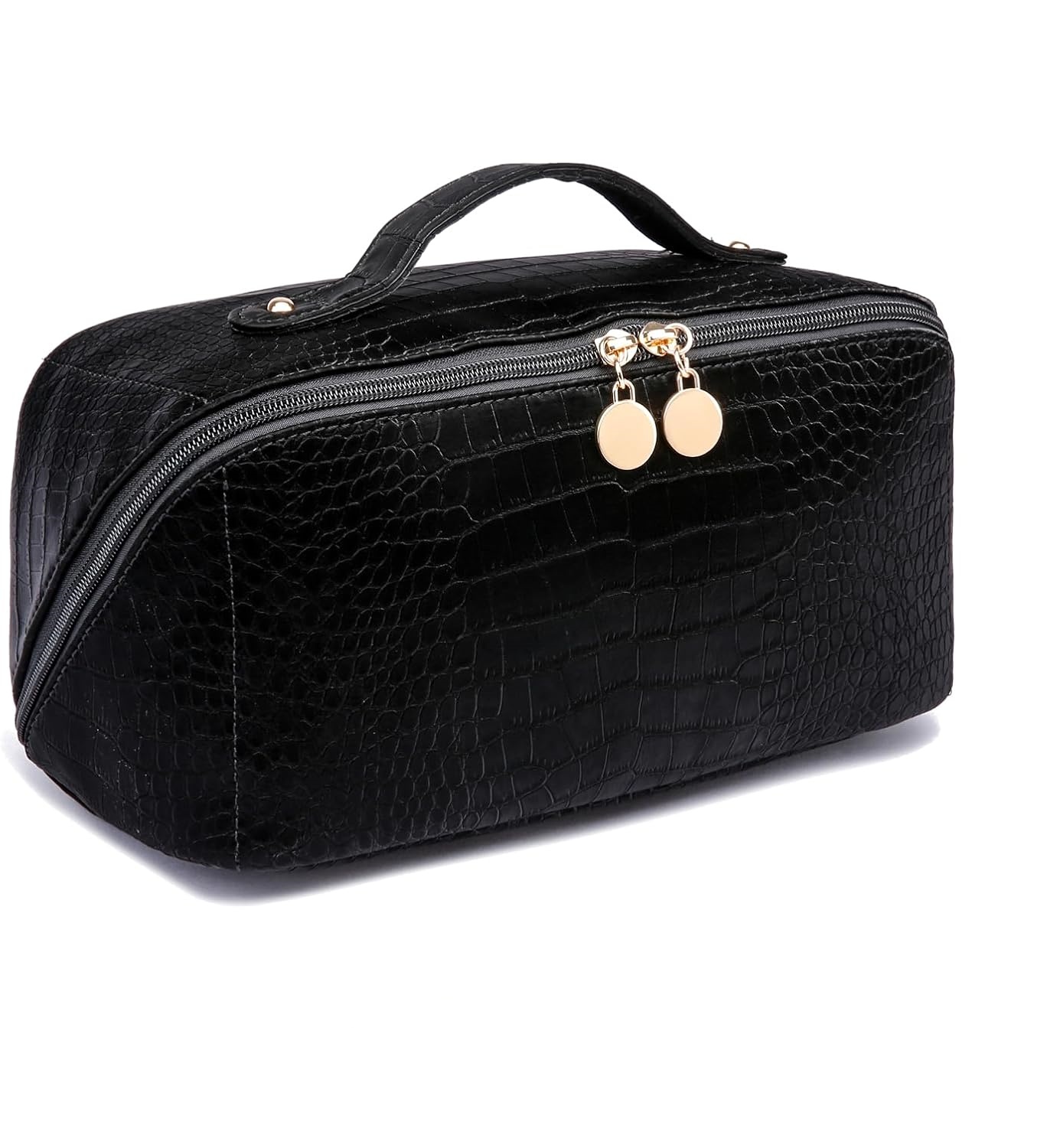
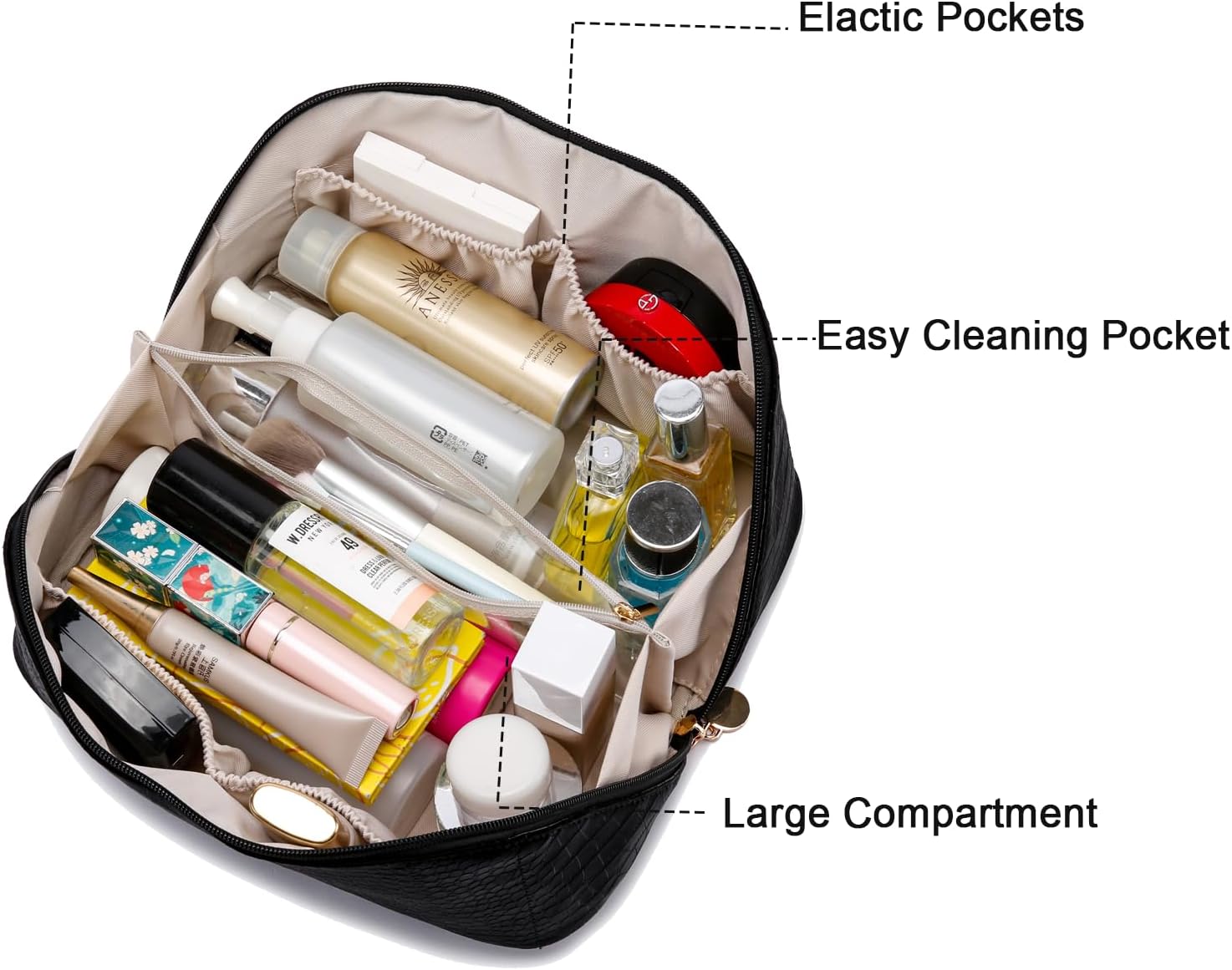
Another exciting frontier is the integration of smart technology. While perhaps less common in traditional cosmetic bags, the demand for convenience and enhanced product care is pushing for innovative tech features:
- Built-in LED Lighting: Often found around mirrors or within the main compartment, LED lighting ensures optimal visibility, allowing for precise makeup application even in dimly lit environments. This feature is particularly appealing to travelers or those who frequently apply makeup on the go.
- Portable Charging Capabilities: With an increasing number of beauty gadgets (e.g., portable facial devices, heated lash curlers) and the ubiquitous need to charge smartphones, some advanced cosmetic bags are incorporating discreet power banks or USB charging ports. This adds a layer of practicality, ensuring users are always connected and their devices ready for use.
- Temperature and Humidity Control: For high-value or sensitive cosmetic products, maintaining optimal storage conditions is crucial. While still nascent, the concept of cosmetic bags with passive or active temperature/humidity regulation could emerge, protecting formulations from extreme heat, cold, or moisture, thereby extending product shelf life and efficacy.
Beyond internal organization and smart features, the overall ergonomics and durability of cosmetic bags are paramount. Brands are focusing on:
- Lightweight Construction: Utilizing advanced materials and design techniques to minimize weight without compromising on structural integrity, making bags easier to carry.
- Comfortable Portability: Thoughtful handle designs, padded shoulder straps, and even integrated trolley sleeves for seamless attachment to luggage, enhancing travel convenience.
- Water-Resistant and Easy-to-Clean Surfaces: Given the nature of cosmetics, spills are inevitable. Materials with water-resistant coatings and wipeable interiors are highly valued, ensuring hygiene and prolonging the bag’s lifespan. This also contributes to the overall sustainability of the product by extending its usability.
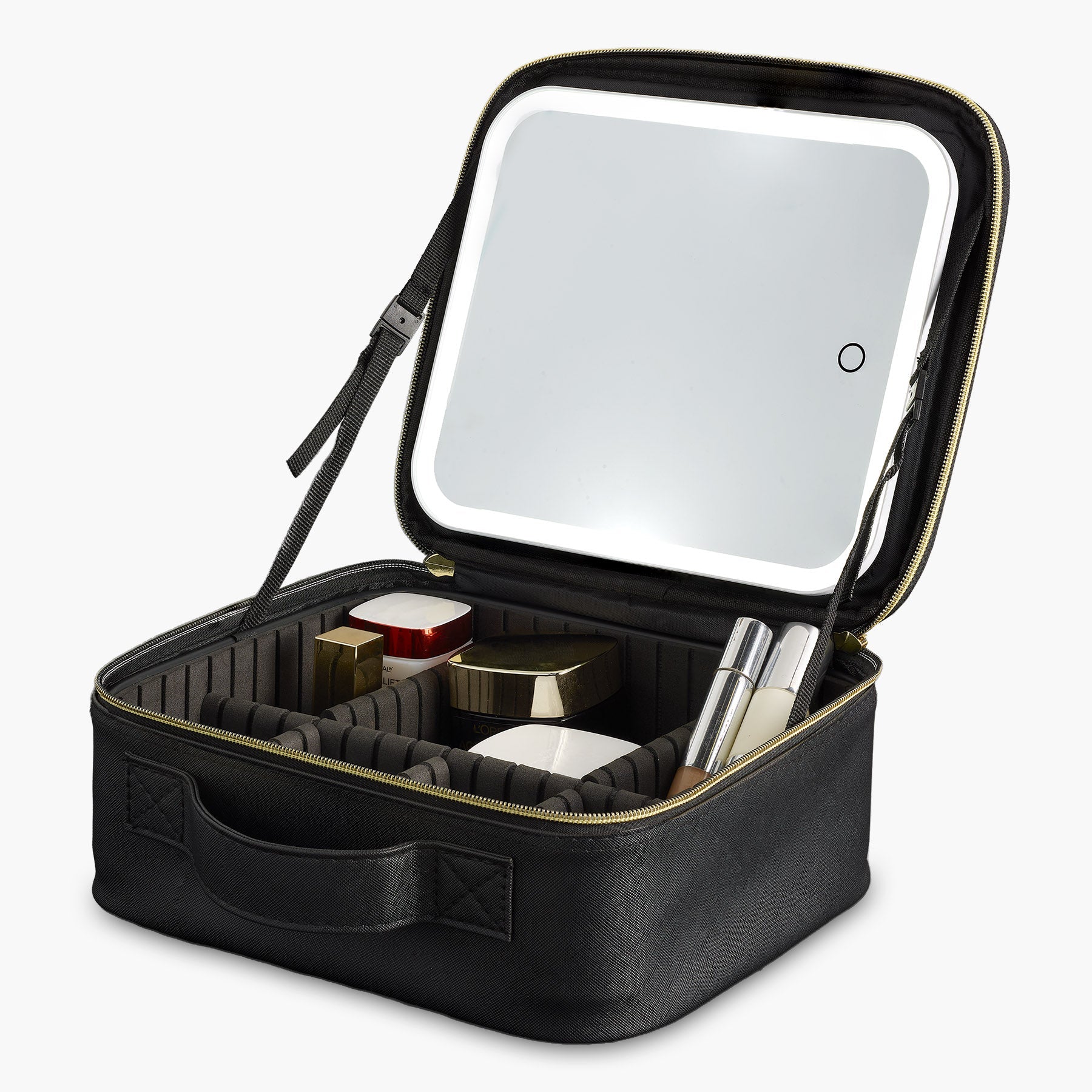

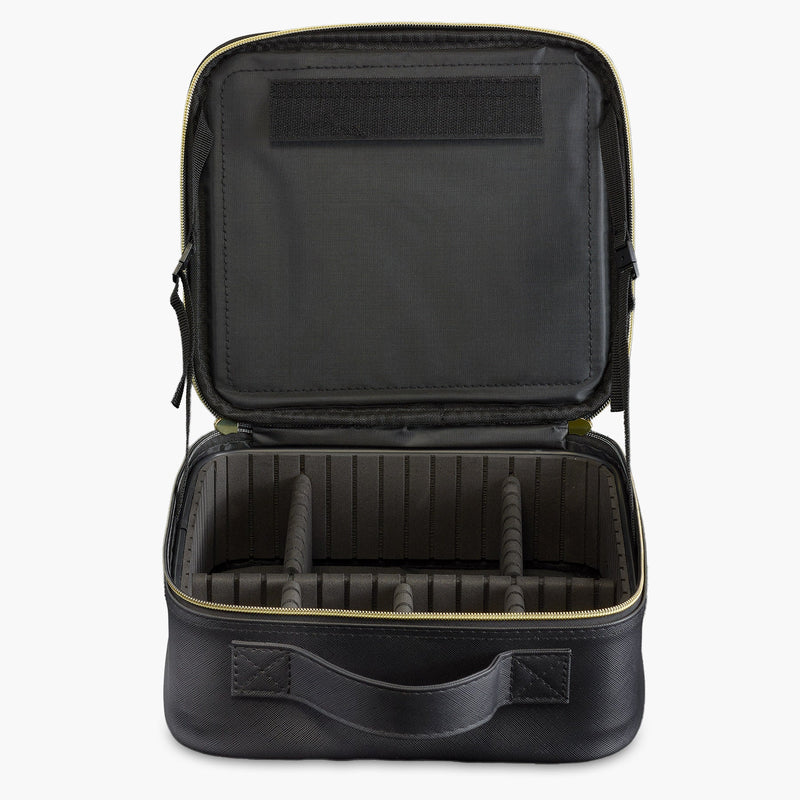
Here’s how new-generation cosmetic bag features align with market demands:
| Functional Feature | User Value Proposition | Market Demand Level (US, UK, Germany) | Rivta's Support Capability |
|---|---|---|---|
| Modular/Detachable Compartments | Customized organization, versatility for different needs, prevents spills | High (especially for travel & professional use) | Strong: Expertise in structural design, diverse material handling, precise manufacturing. |
| Built-in LED Lighting | Enhanced visibility for makeup application, convenience in low-light settings | Medium-High (growing for tech-savvy users) | Good: Ability to integrate electronic components, ensure safety and durability. |
| Portable Charging (USB ports) | Convenience for charging small devices/beauty gadgets on the go | Medium (niche but expanding) | Good: Sourcing and integration of certified power solutions, secure housing. |
| Water-Resistant/Easy-Clean Interiors | Hygiene, product protection, extended bag lifespan, easy maintenance | High (universal appeal) | Strong: Selection of appropriate materials, advanced coating techniques, quality control. |
| Ergonomic Handles/Straps | Comfortable portability, reduced strain, travel-friendly | High (especially for larger bags & travel) | Strong: Design capabilities for user comfort, durable hardware sourcing, robust stitching. |
| Durable Zippers & Hardware | Longevity, smooth operation, secure closure | High (fundamental expectation) | Strong: Sourcing high-quality, tested components, skilled assembly, rigorous testing. |
| Compact yet Spacious Design | Maximizes storage in minimal footprint, ideal for daily carry or travel | High (balancing portability with capacity) | Strong: Advanced pattern making, efficient space utilization, material selection for flexibility. |
3. Personalization and Brand Storytelling: Crafting Connections Through Design
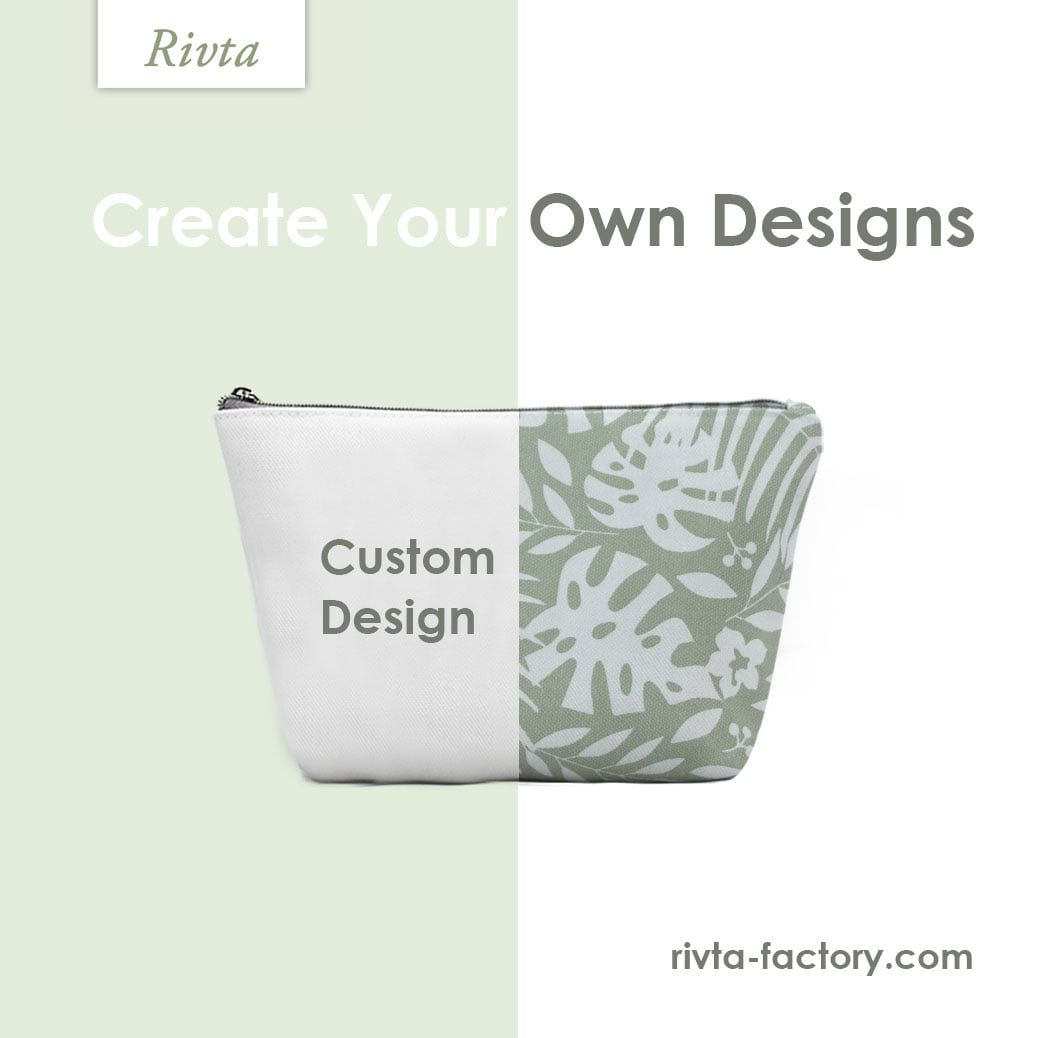
In an increasingly crowded marketplace, where product differentiation can be challenging, the cosmetic bag has emerged as a powerful medium for brand storytelling and fostering deeper connections with consumers. Beyond its practical utility, it serves as a canvas for expressing brand values, aesthetic sensibilities, and even a brand's commitment to sustainability. The growing consumer demand for unique and personalized experiences is pushing brands to move beyond generic designs, embracing customization as a core strategy to build loyalty and reinforce their identity.
The drive for customization is multifaceted. Consumers, particularly in mature markets like the US, UK, and Germany, are no longer content with mass-produced items. They seek products that reflect their individuality, their lifestyle, and their personal values. For cosmetic bags, this translates into a desire for bespoke elements, whether it's a unique color palette, a distinctive texture, or even personalized monograms. Brands that can offer these tailored experiences stand to gain a significant competitive edge, transforming a simple purchase into a meaningful interaction.
This emphasis on personalization is intrinsically linked to design aesthetics. The visual and tactile appeal of a cosmetic bag plays a crucial role in its perceived value and desirability. In 2025, we observe a fascinating interplay of design trends:
- Minimalism with Purpose: While clean lines and understated classics remain popular, minimalism is evolving to incorporate thoughtful details and superior material finishes. The focus is on quality over quantity, with designs that are both timeless and functional.
- Bold Patterns and Textures: At the other end of the spectrum, vibrant patterns, holographic finishes, and rich textures are making a strong statement. These designs cater to consumers who view their cosmetic bags as fashion accessories, an extension of their personal style.
- Evolving Forms and Silhouettes: The traditional rectangular pouch is being reimagined. We are seeing a rise in more sculptural and unconventional shapes, such as the structured 'doctor bag' style, the elongated 'east-west' silhouettes, and the free-spirited 'boho crossbody' designs.
- Color Psychology: The strategic use of color continues to be vital. Brands are leveraging trending color palettes to evoke specific emotions and align with seasonal collections, ensuring their cosmetic bags are not just practical but also fashion-forward.
Crucially, the cosmetic bag is becoming a powerful tool for brand storytelling. Every design choice, from the selection of an eco-friendly material to the inclusion of a subtle brand motif, can communicate a brand’s narrative. For instance, a bag made from recycled ocean plastic can tell a story of environmental responsibility, while a design featuring intricate hand-stitched details might convey a brand’s commitment to craftsmanship and heritage. This narrative approach helps brands differentiate themselves, build emotional connections with their audience, and articulate their unique value proposition. In a world saturated with choices, a compelling brand story, tangible through its products, can be the ultimate differentiator.
Furthermore, the cosmetic bag, as an everyday companion, has the potential to forge a deep emotional connection with the user. It travels with them, holds their cherished beauty essentials, and often becomes a part of their daily rituals. When a brand invests in creating a cosmetic bag that is not only functional and beautiful but also resonates with the user's values and aspirations, it strengthens brand loyalty. This goes beyond a transactional relationship; it cultivates a sense of belonging and affinity, turning customers into brand advocates.
Rivta: Your Strategic Partner in the Evolving Cosmetic Bag Market

In the dynamic and increasingly competitive landscape of the beauty and personal care industry, selecting the right manufacturing partner is paramount to success. For brands seeking to navigate the complexities of evolving consumer demands, stringent regulations, and the imperative for sustainable and innovative solutions, Rivta stands as a steadfast and experienced ally. Established in the 1990s, Rivta has cultivated a deep understanding of the global market, specializing in custom-made, mid-to-high end eco-friendly cosmetic bags that today's discerning brands and consumers demand.
Our journey, spanning over three decades, has been marked by a relentless pursuit of excellence and a forward-thinking approach to manufacturing. We are not merely a production facility; we are a comprehensive solution provider, offering a suite of services designed to empower brands at every stage of their product development cycle.Our core strengths are meticulously aligned with the prevailing trends and future demands of the cosmetic bag market:
- Experience and Expertise: With a heritage dating back to the 1990s, Rivta possesses an unparalleled depth of experience in the bag manufacturing industry. This extensive history has equipped us with profound market knowledge, enabling us to anticipate trends, understand diverse regional preferences, and provide informed guidance to our partners.We have witnessed and adapted to countless shifts in consumer behavior and industry standards, ensuring that our manufacturing processes and product offerings remain at the cutting edge.
- Innovation in Design and Materials: At Rivta, innovation is embedded in our DNA. We pride ourselves on our original design capabilities, working collaboratively with brands to transform abstract concepts into tangible, market-ready products. Our commitment to innovation extends to pioneering eco-friendly material solutions.We actively research, source, and implement next-generation sustainable materials—from recycled fabrics to bio-based alternatives—ensuring that our partners can offer products that are both aesthetically pleasing and environmentally responsible. This proactive approach to material science allows brands to stay ahead of regulatory curves and meet the growing consumer demand for sustainable goods.
- Unrivaled Customization Services: Understanding that every brand possesses a unique identity and vision, Rivta excels in providing comprehensive customization services. From initial concept development and material selection to bespoke design elements and finishing techniques, we offer a flexible and responsive manufacturing process tailored to individual brand requirements. Whether it’s integrating smart features, developing modular designs, or crafting unique aesthetic details that tell a compelling brand story, our capabilities ensure that the final product perfectly embodies the brand’s ethos and resonates with its target audience.
- Commitment to Quality and Compliance: Quality is the cornerstone of Rivta's operations. Our adherence to international certifications such as BSCI, SEDEX, and ISO9001 underscores our unwavering commitment to ethical labor practices, social responsibility, and consistent product quality.These certifications provide our global brand partners with the assurance that their cosmetic bags are produced under fair conditions and meet the highest international standards, mitigating risks and enhancing brand reputation.
Conclusion: Shaping the Future of Cosmetic Bags
As we look towards 2025 and beyond, it is clear that the cosmetic bag market is undergoing a profound transformation, driven by a convergence of consumer demand, regulatory pressures, and technological advancements. The era of the basic pouch is unequivocally behind us. In its place, we see the emergence of next-generation designs that are defined by three interconnected pillars: a steadfast commitment to sustainability and material innovation, the integration of enhanced functionality and smart features, and the power of personalization to drive brand storytelling.
These trends are not merely fleeting fads; they represent fundamental shifts in how products are conceived, produced, and consumed. For brands operating in the competitive US, UK, and German markets, embracing these changes is not just an option but a strategic imperative. It is an opportunity to differentiate, to build deeper connections with an increasingly conscious consumer base, and to contribute positively to a more sustainable future.
The challenges inherent in this evolution—from navigating complex material science to integrating advanced technologies—are significant, but so too are the rewards for those who lead the way.
Ultimately, the successful cosmetic bag of tomorrow will be a harmonious blend of practicality, aesthetic appeal, and profound responsibility. It will be a product that not only organizes and protects beauty essentials but also embodies a brand's values, tells a compelling story, and minimizes its environmental footprint.By partnering with manufacturers who possess the foresight, expertise, and capabilities to navigate this evolving landscape, brands can ensure their cosmetic bags are not just accessories, but powerful statements of their commitment to innovation, quality, and a sustainable world. The future of cosmetic bags is here, and it is more exciting and impactful than ever before.
Ready to explore how Rivta can help bring your next-generation cosmetic bag vision to life? Visit us at https://rivta-factory.com/ to learn more about our innovative solutions and sustainable manufacturing capabilities.

